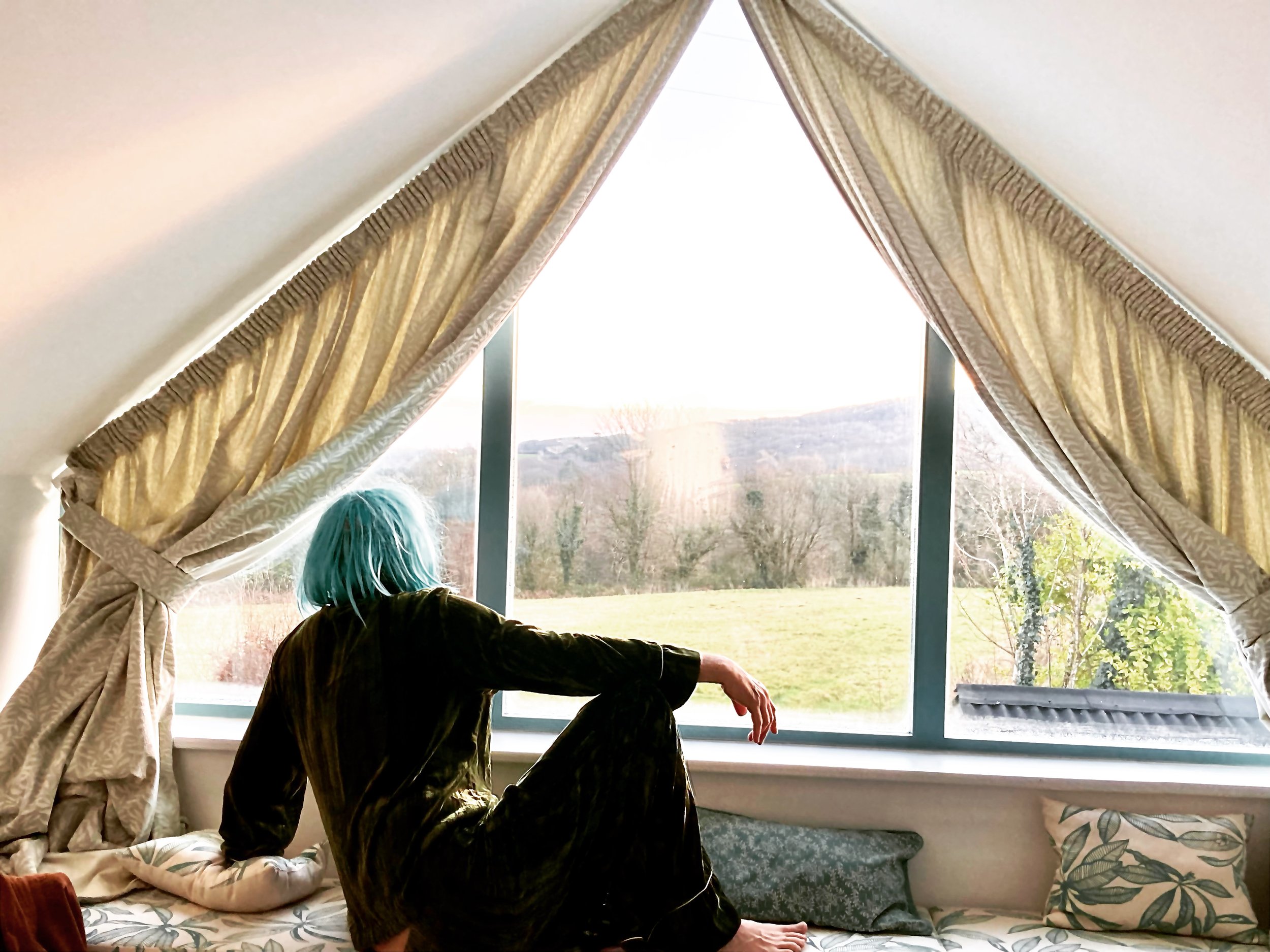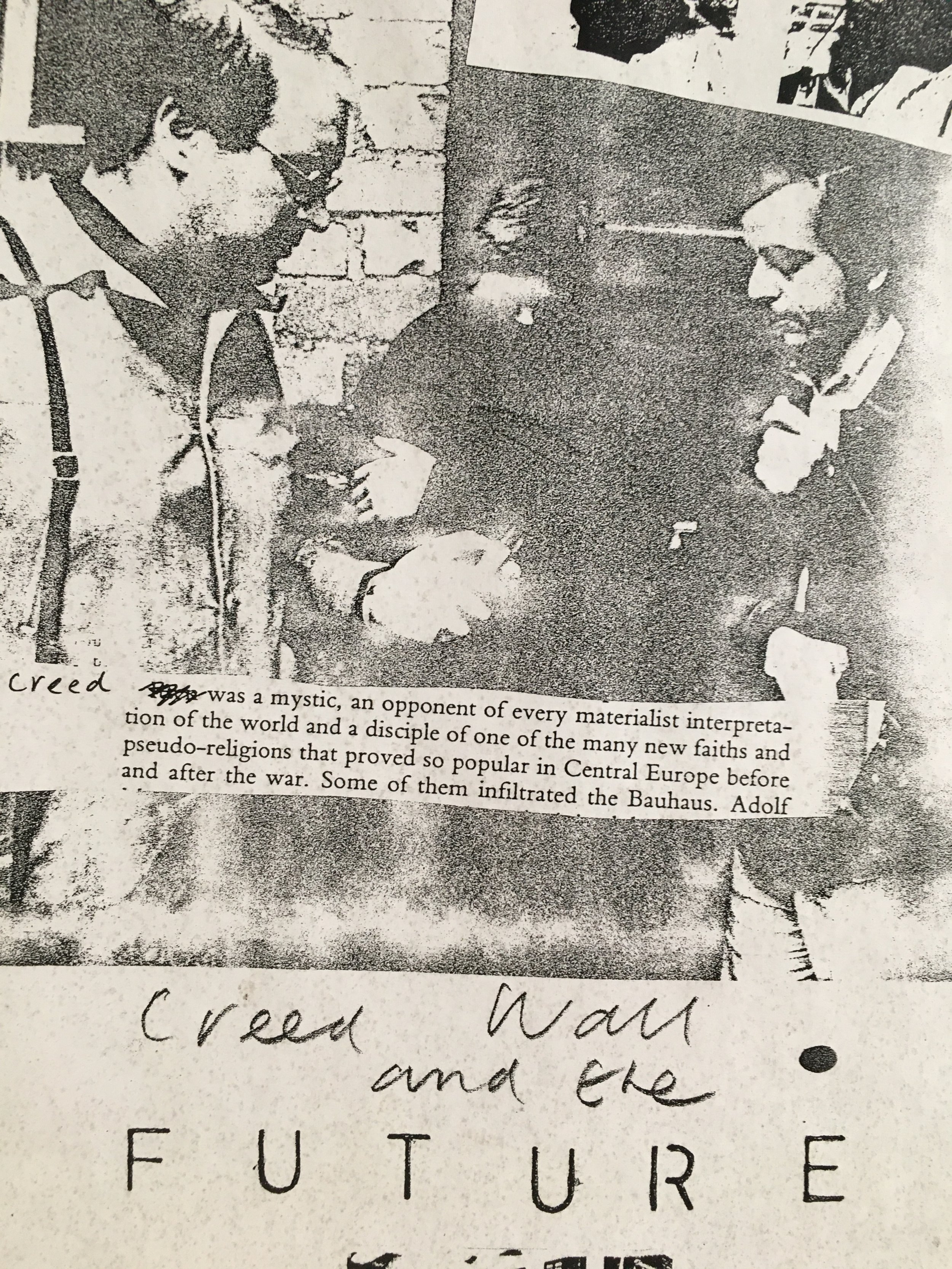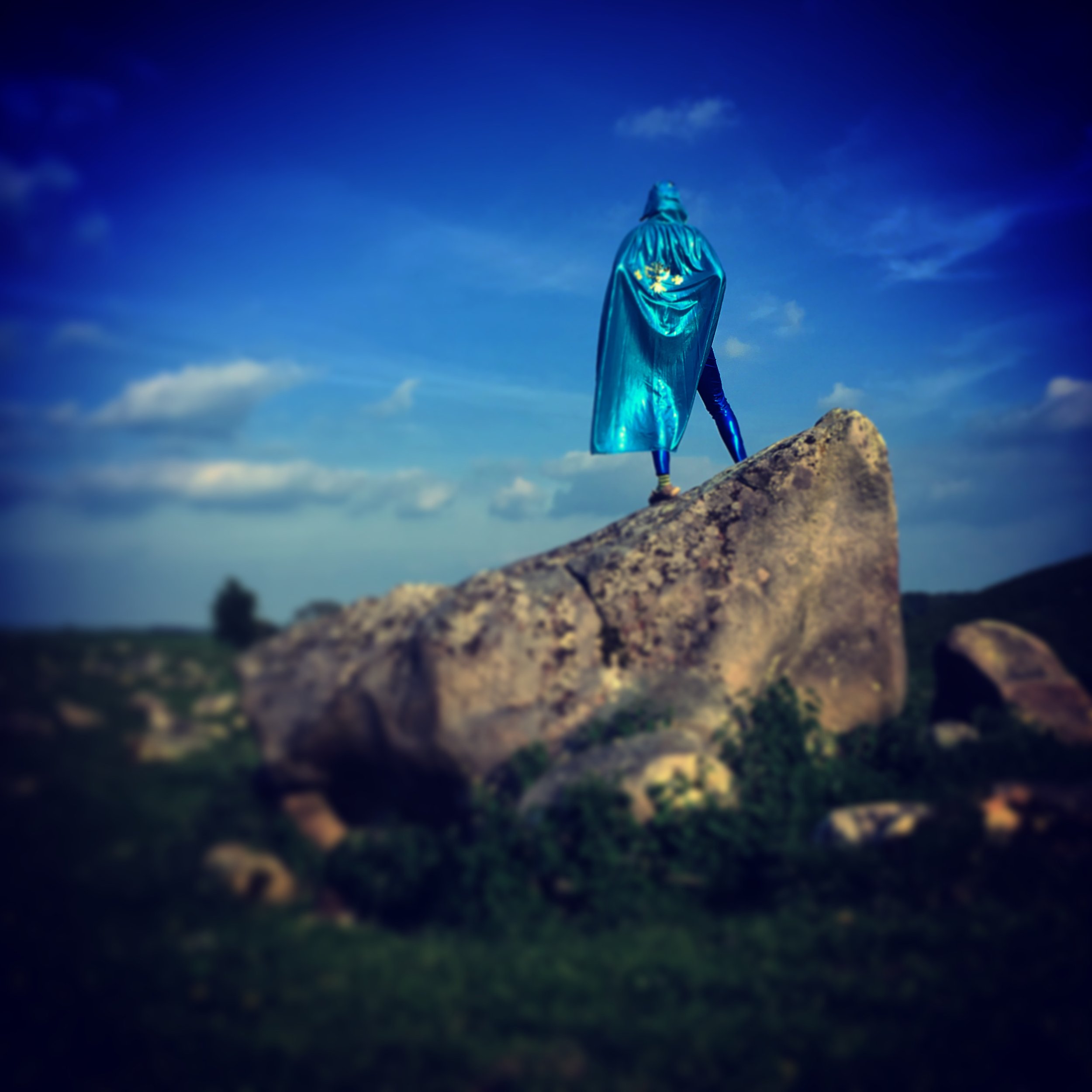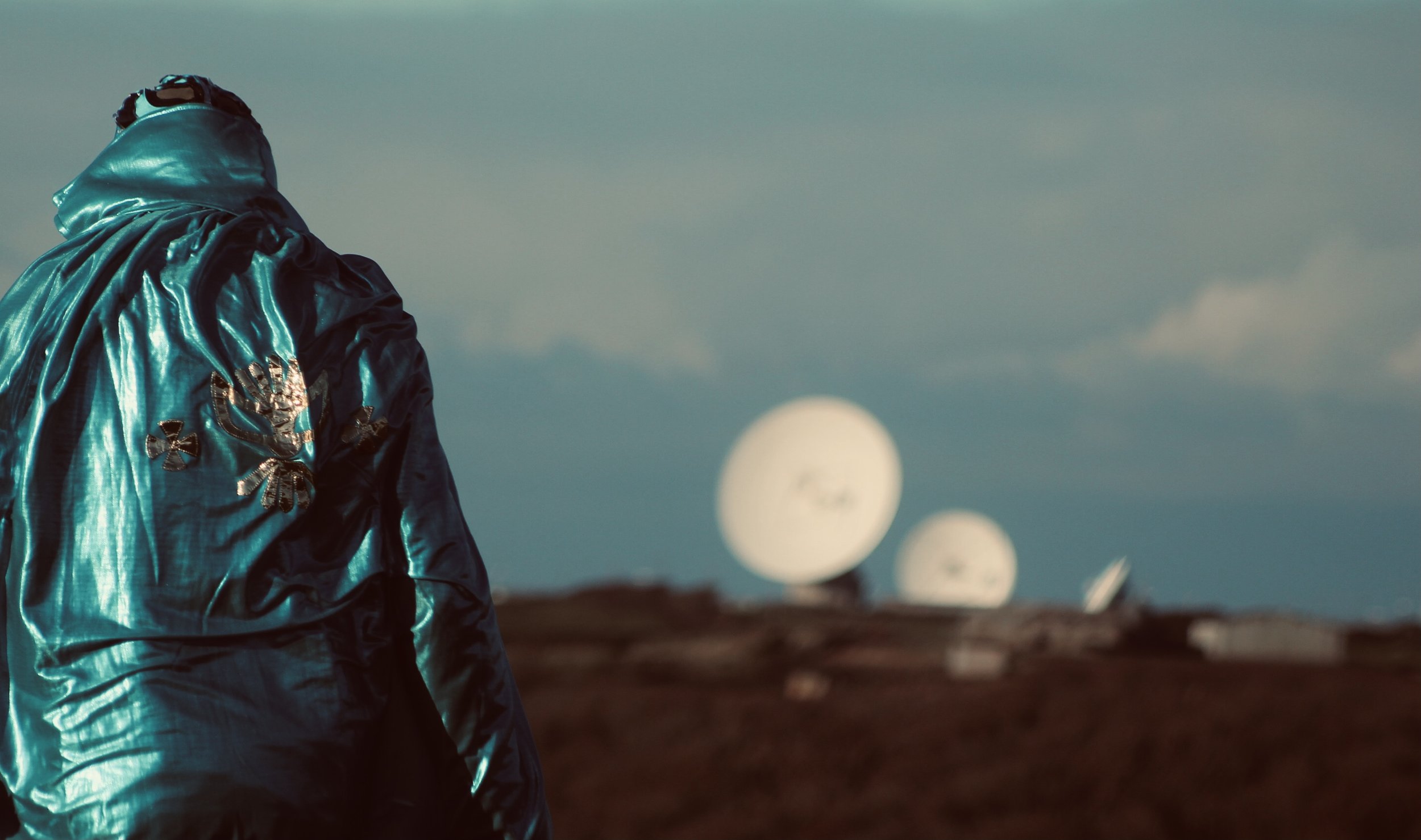Bio
G Bekken Wand is a nomadic German curator, known for blue hair, silver clothes and a love for fine art but not parties. Part of the radical pre-Wall generation, G Bekk now concentrates on young emerging British artists since their German peers have become far too serious and dull.
Contacts
https://volkskammerblog.wordpress.com/
@gbekkenwand
1 - Could you explain your practice? Only you know why you do what you do.
Well, while I do make some of my own work, and am currently re-examining abstraction in drawing, tape and earth pigments, I am a curator. I work with my life partner, Uwe, and together we run a contemporary curating practice. Our roots were in Berlin where we had a showing space, Volkskammer, but now – thanks to Covid and other things – we are nomads. Currently we are based near Lienz in a rural and mountainous part of Austria.
Even here, last year before winter hit, we ran a show in association with Test Space in Bristol, UK called ‘Wascheleine’. The premise was simple – all the works had to be able to be hung on a washing line set up in the grounds of our home. Most of the artists were from the UK and many of the works were textile and some even wearable. It was fabulous to do this and we were so grateful to the artists for their work.
Before this we held a show on the Island of Corfu (Greek Ruin) involving many major contemporary art figures, including Mike Nelson and Richard Long, whose works were installed in various locations around the island, while the exhibition hub was a half finished and now abandoned villa built for a Russian Oligarch. We like to work repeatedly with the same artists and organisations. We also like islands – earlier shows have been on the Isle of Skye and Gran Canaria.
We have worked many times with the Mysterious Blue Rider, staging performances in Spain, Italy and the UK. We do not have a guiding philosophy – we know what we like and that is good enough for us! In truth we owe it all to Creed Wall
2 - Is art relevant today?
I certainly hope so – its my job! But I want a job that is relevant and not guided by whims and fashion. Sometimes – like now – when world news is so bad, it seems that some art is irrelevant. We hope to bring people the good stuff. Curating is such hell but the Revolution is everywhere and it will find its way out.
Pure art is part of that revolutionary process – challenging assumptions and mores. We hope to be on the right side.
3 – We are always asked what other artists influence us, we want to know what art you don’t like and which influences you?
All artists have an influence. I suck it all up – mainly nowadays by prowling Instagram – as we don’t get out as much as we used to. I really like all kinds of stuff – there isn’t much I hate except maybe work that is too slick and shallow and all that really serious stuff that Germans are meant to like which is just sooo boring! I also don’t like artists that are rude to the installing teams or their assistants. And maybe those artists we just see too much of that are meant to be so clever like Martin Creed and Jeremy Deller. And, though he used to be ok, that Grayson Perry is just on TV too much.
I’m liking some younger British artists with an irreverent approach at the moment – people like Tom Bull, Rebecca Moss, Dinosaur Kilby and Faye Roc but I like the enduring hardworkers too like Martyn Cross and Mike Nelson, both of whom I’ve worked with.
4- If you could go back 10-20 years what would you tell your younger self?
The usual stuff – be more friendly, be more confident. You have something unusual so don’t be afraid to shout about it. But most of all, just be yourself.
5 – If you could go forward 10-20 years what do you hope to have done or not done?
Maybe be braver and go out again more. I’d really like to go back to America – we had a disastrous trip in 2020 just as Covid hit and we had to leave. I’ve not quite got over that. When the Wall was coming down, we all wanted to be Americans. How wrong we were – but I still like to see the enemy close up!
Who I work with…
Creed Wall
Creed Wall first appeared as a reluctant post-punk musician, riding on the wave of British enthusiasm in the New York scene in the early 1980s. At this time, he famously refused to reveal his face to the media. The only surviving picture of him (being interviewed for a punk fanzine) shows him swaddled in a large scarf while reporters thrust microphones and notebooks in his face.
He went on to develop an interest in fringe science, founding the Psychic Research Foundation in 2001 which investigated paranormal events, ufo sightings, and alien abductions, particularly in the vicinity of radio and mobile phone masts. The theory was that certain individuals might be particularly sensitive to electromagnetic radiation, triggering visions of aliens or ghosts which could therefore be explained by traditional science. These theories, and vector surveys across British cities such as Bristol, attracted the interest of both mainstream and fringe media. In 2002, he was interviewed by the BBC, the Fortean Times, a Greek Sci-Fi channel, and the British artist Olivia Plender.
Creed became increasingly dissatisfied with the way his work was received by mainstream science and media and in 2005 returned to his native Manhattan. He now lives in isolation there, sometimes dealing in artworks inherited from his mother.
He championed the reputation of a British artist, Gerard de Verre, supposedly active during the mid-1940s as being prescient of later developments in contemporary art. In September 2014, some of Gerard's works were included in an exhibition at the Salisbury Arts Centre which surveyed lost but influential or prescient works from the mid-20th century. However, subsequently, many of these works were found to be fakes and what remained of Wall’s reputation was in tatters
Until recently, he maintained a lively Facebook presence, exchanging insults with art world figures such as Matthew Collings, Kenny Schacter, and Stewart Home but he has gone quiet. Some think he may have passed on, or perhaps never existed at all…
The Mysterious Blue Rider
The Mysterious Blue Rider was first seen on google maps streetview images in 2013, often at locations where crop circles had been reported, ufos sighted or alien abductions taken place. Reports of this mysterious figure, quickly dubbed the 'Blue Rider', mounted up and were logged and documented during the 2014 crop circle season by members of fringe and conspiracy sites. At some point in 2015, images from the posts of those reporting the phenomenom started to appear on Instagram, under the Blue Rider’s nominated account (@blu_rider) and later – as short video clips on You Tube.
The Blue Rider’s sphere of activities widened and posts appeared for many years from a variety of locations across Europe and the Americas, including Mexico, Patagonia, the Canary Islands, the Isle of Skye and Sardinia. The Mysterious Blue Rider tended to appear at significant ancient sites. These have included Silbury Hill and Avebury in England, the Temples of Ta'Hagrat, Mgarr and Hagar Qim on Malta, the Pyramids of Guimar, Tenerife, and the Ziggurat of Monte d'Accoddi on Sardinia. These appearances often coincided with the Spring or Vernal Equinoxes. The appearances seem to contain a message for humanity which often takes the form of a warning against unbridled progress, vague threats of an alien invasion or apocalypse, or sometimes, more simply, a yearning for home and understanding.
In recent years the Blue Rider has tended not to disclose any specific location but is nearly always present publicly at the full moon.













